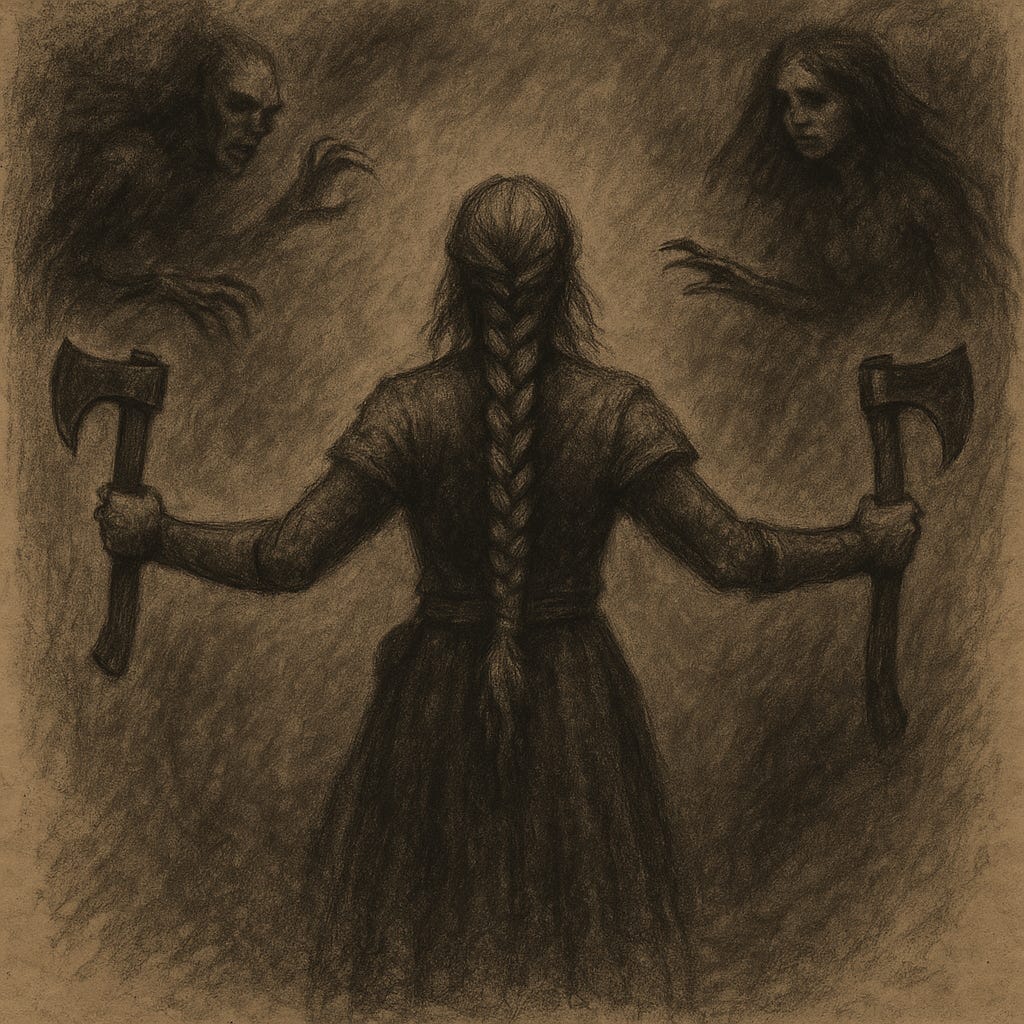📂Folklore Files: The Protection Spell You Perform Without Knowing.
Why braiding your hair was once a shield against evil forces, both seen and unseen
Overview
Each morning, millions of people braid their hair without a second thought. A simple act of grooming, fashion, or routine. Yet woven into this everyday gesture is a hidden protection ward from our ancestors: a silent protection ritual, older than memory, meant to shield the wearer from forces both seen and unseen.
Across Norse, Celtic, Slavic, and many other cultures, the humble braid was far more than decoration. It was a ward, a woven shield, a binding of body, mind, and spirit to resist the unseen dangers of the world.
Cultural Origins of Braiding as Protection
In ancient Norse society, braiding hair was both practical and profoundly symbolic. Men and women alike braided their hair before battle, before travel, or even before daily toil. It kept hair manageable, but also served to "bind" a warrior's hamingja — their personal luck and spiritual strength — tightly to their body.
Similarly, among the Celts, hair was a deeply spiritual symbol. Loose hair was considered wild, unguarded, even dangerous. To braid it was to tame it, to create harmony within, and to guard against the chaotic forces believed to roam the natural and spirit worlds.
Among Slavic peoples, particularly in wedding rites, the act of braiding a bride's hair was a sacred protection against sorcery. Braided hair represented the safeguarding of purity, fortune, and spirit, until the bond of marriage could properly "reweave" her destiny.
The Power of the Number Three
In particular the three-strand braid held the most power and was not chosen by accident. Across ancient traditions, the number three carried immense mystical weight:
Mind, Body, Spirit: A harmony of the human condition.
Life, Death, Rebirth: The endless cycle of existence.
Past, Present, Future: The binding of time itself.
Where two strands could be easily undone and four might pull unevenly, three formed the strongest natural weave — a braid that was stable, balanced, and "sealed" against spiritual interference.
In Norse myth, the World Tree Yggdrasil had three great roots. In Celtic belief, triads shaped magic and reality. Braiding three strands was a quiet echo of these sacred truths, a daily ritual to harmonise the self against the disharmony of the wider world.
What the Braid Was Protecting Against
The dangers the braid guarded against were not merely physical:
Wandering spirits could latch onto loose hair, using it as a tether to drain vitality or sow misfortune.
Witches and sorcerers were believed to be able to "catch" unbraided strands and twist them into curses.
Fairies — especially in Celtic lands — were said to ensnare unbraided hair at night, pulling dreamers into strange realms from which they might never fully return.
In Norse cosmology, the "thread of life" was a literal thing, spun, woven, and ultimately cut by the Norns — three supernatural women who shaped the destiny of every being, mortal or divine. To leave hair unbraided was to present a loose, vulnerable thread, one that could be more easily severed, tangled, or corrupted by unseen forces.
To braid hair was to seal the self tightly: to prevent these spiritual forces from finding a hold, from tangling the lines of fate.
The Nighttime Ritual: Unbraiding to Release
Yet protection had its time and place.
At night, before sleep, braids were undone — carefully and with intention. To sleep with hair still braided was considered dangerous in many traditions. It was believed that the same strands that guarded the soul during the day could entangle the soul during dreaming, trapping it in the body or making it vulnerable to possession.
Dreaming itself was seen as a journey: a loosening of the spirit. Loose hair allowed the soul to move freely, while braids could bind it too tightly, causing illness, night terrors, or spiritual stagnation.
Thus, the unbraiding at night was a mirror ritual: releasing the bindings that kept the spirit safe during waking hours, so it could safely wander and return.
The Lingering Spell in Modern Times
Today, the magical origins of braiding are all but forgotten. Hair is styled for beauty, for convenience, for fashion. Yet the old patterns persist. The three-strand braid remains the most common, the most natural. Even without knowing, many continue the ritual: weaving strength and protection around themselves each morning, unwinding the day's defences each night.
Perhaps the dangers have changed. Or perhaps the threats remain, quieter, subtler — and we, unknowingly, still prepare for them, as our ancestors did.
Every braid a shield. Every unbraiding a release.
A forgotten magic, still alive in every hand that weaves the morning's first braid.
"From Ymir's flesh the earth was made,
and from his blood, the sea,
mountains from his bones, trees from his hair,
and from his skull, the sky."— Grímnismál, stanza, from the Poetic Edda (13th century Icelandic manuscript collection of older Norse oral tradition)
This passage highlights hair's integral role in the cosmos's formation, symbolizing life and growth.




What do you do if your hair is too short to braid? Not everyone can grow long hair.